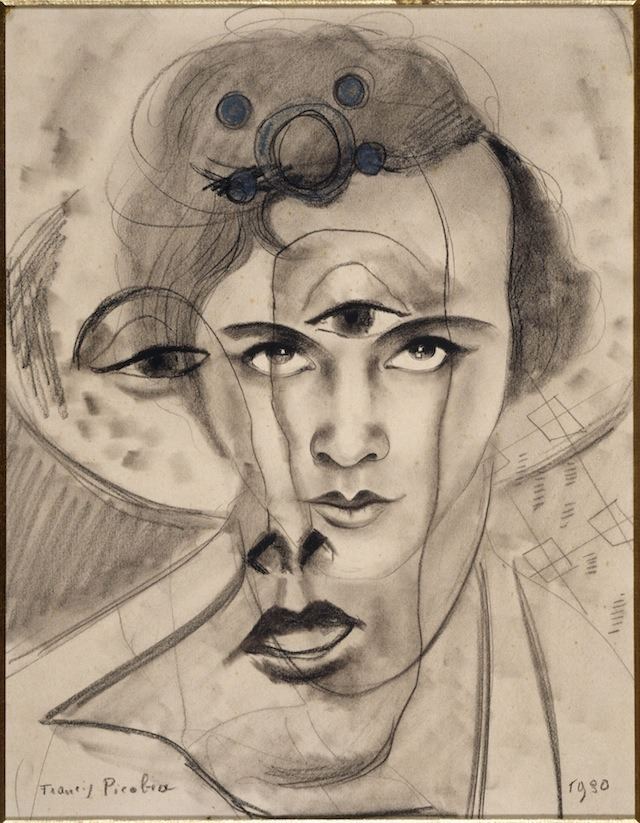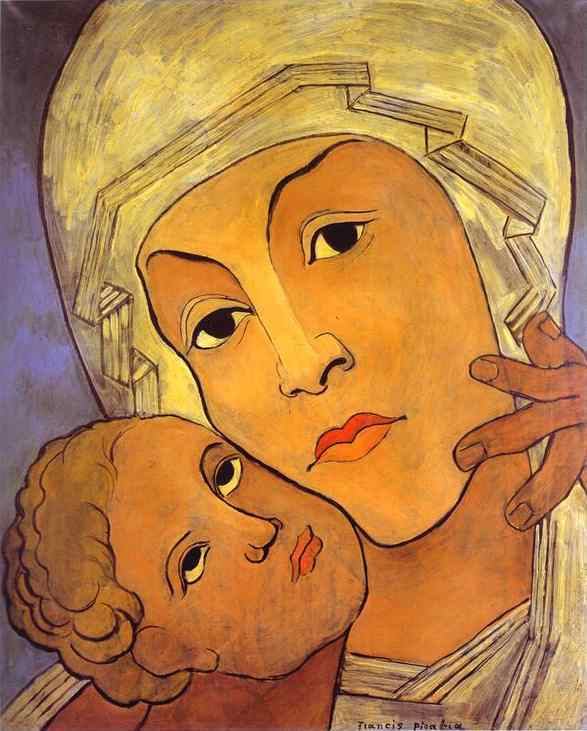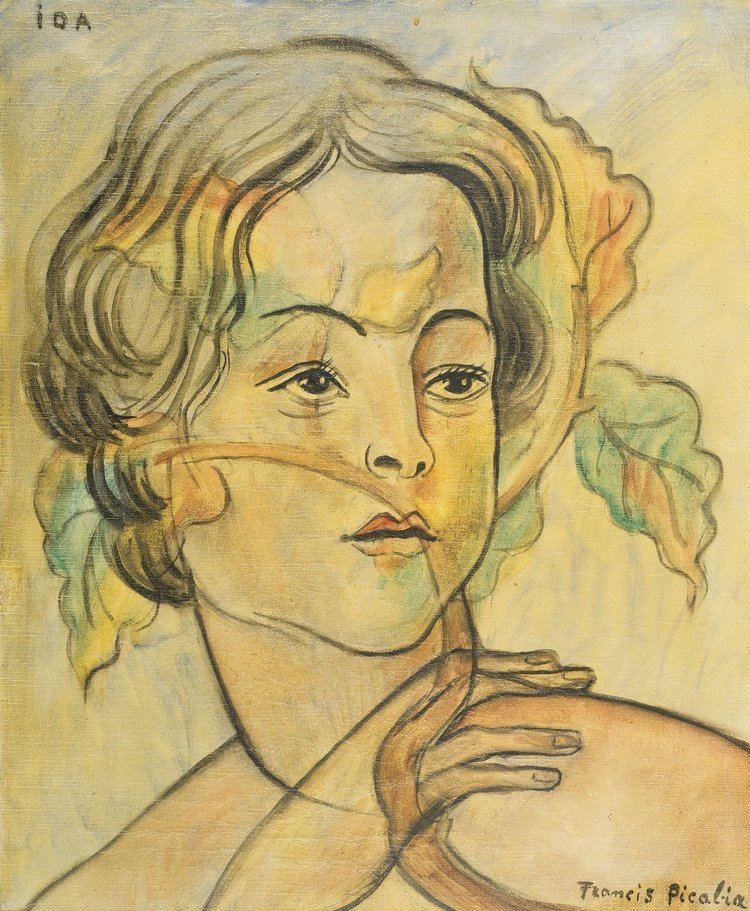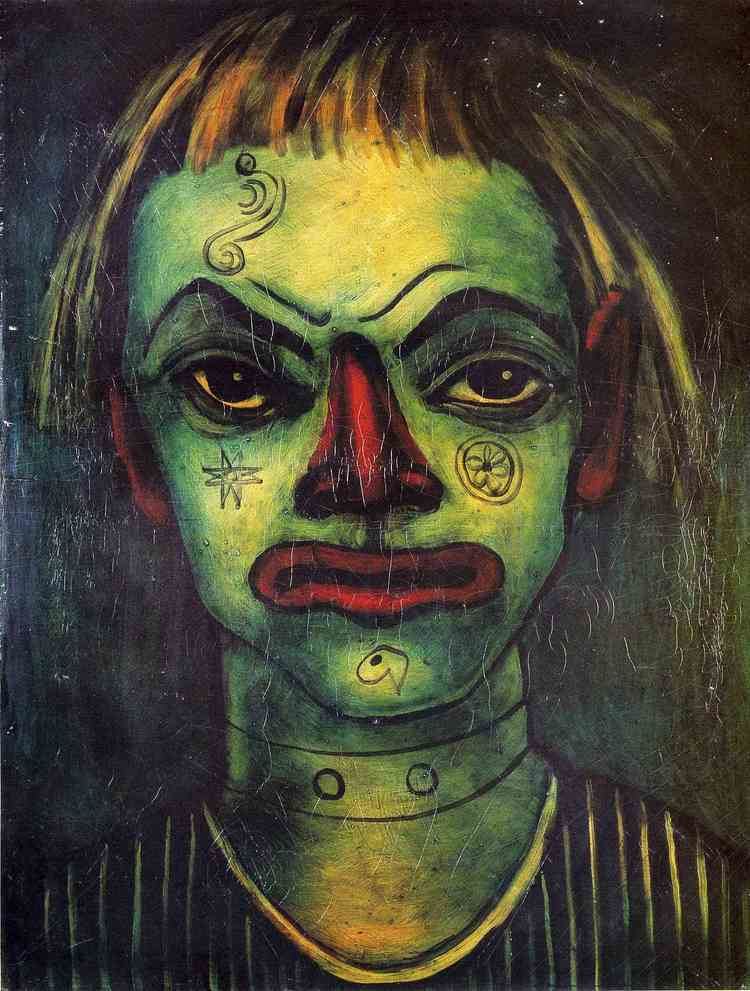Nationality French Role Painter Name Francis Picabia | Notable work Amorous Parade Movies Entr'acte | |
 | ||
Full Name Francis-Marie Martinez Picabia Died November 30, 1953, Paris, France Spouse Gabrielle Buffet (m. 1909–1953) Artwork Edtaonisl (Clergyman), I See Again in Memory My Dear, Portrait of a Couple, Comic Wedlock, "M'Amenez‑y" Similar People | ||
HOW TO SEE | Francis Picabia
Francis Picabia ([fʁɑ̃sis pikabja]; born Francis-Marie Martinez de Picabia, 22 January 1879 – 30 November 1953) was a French avant-garde painter, poet and typographist. After experimenting with Impressionism and Pointillism, Picabia became associated with Cubism. His highly abstract planar compositions were colourful and rich in contrasts. He was one of the early major figures of the Dada movement in the United States and in France. He was later briefly associated with Surrealism, but would soon turn his back on the art establishment.
Contents

Francis picabia
Early life

Francis Picabia was born in Paris of a French mother and a Cuban father who was an attaché at the Cuban legation in Paris. His mother died of tuberculosis when he was seven. Some sources would have his father as of aristocratic Spanish descent, whereas others consider him of non-aristocratic Spanish descent, from the region of Galicia. Financially independent, Picabia studied under Fernand Cormon and others at the École des Arts Decoratifs in the late 1890s.

In 1894, Picabia financed his stamp collection by copying a collection of Spanish paintings that belonged to his father, switching the originals for the copies, without his father's knowledge, and selling the originals. Fernand Cormon took him into his academy at 104 boulevard de Clichy, where Van Gogh and Toulouse-Lautrec had also studied. From the age of 20, he lived by painting; he subsequently inherited money from his mother.

In the beginning of his career, from 1903 to 1908, Picabia was influenced by the Impressionist paintings of Alfred Sisley. Little churches, lanes, roofs of Paris, riverbanks, wash houses, lanes, barges—these were his subject matter. Some however, began to question his sincerity and said he copied Sisley, or that his cathedrals looked like Monet, or that he painted like Signac. From 1909, he came under the influence of those that would soon be called Cubists and later form the Golden Section (Section d'Or). The same year, he married Gabrielle Buffet.

Around 1911 Picabia joined the Puteaux Group, members of which he met at the studio of Jacques Villon in Puteaux; a commune in the western suburbs of Paris. There he became friends with artist Marcel Duchamp and close friends with Guillaume Apollinaire. Other group members included Albert Gleizes, Roger de La Fresnaye, Fernand Léger and Jean Metzinger.
Proto-Dada

Picabia was the only member of the Cubist group to personally attend the Armory Show, and Alfred Stieglitz gave him a solo show, Exhibition of New York studies by Francis Picabia, at his gallery 291 (formerly Little Galleries of the Photo-Secession), March 17 - April 5, 1913.
From 1913 to 1915 Picabia traveled to New York City several times and took active part in the avant-garde movements, introducing Modern art to America. When he landed in New York in June 1915, though it was ostensibly meant to be a simple port of call en route to Cuba to buy molasses for a friend of his—the director of a sugar refinery—the city snapped him up and the stay became prolonged.
The magazine 291 devoted an entire issue to him, he met Man Ray, Gabrielle and Duchamp joined him, drugs and alcohol became a problem and his health declined. He suffered from dropsy and tachycardia. These years can be characterized as Picabia's proto-Dada period, consisting mainly of his portraits mécaniques.
Manifesto
Later, in 1916, while in Barcelona and within a small circle of refugee artists that included Marie Laurencin, Olga Sacharoff, Robert Delaunay and Sonia Delaunay, he started his well-known Dada periodical 391, modeled on Stieglitz's own periodical. He continued the periodical with the help of Marcel Duchamp in the United States. In Zurich, seeking treatment for depression and suicidal impulses, he had met Tristan Tzara, whose radical ideas thrilled Picabia. Back in Paris, and now with his mistress Germaine Everling, he was in the city of "les assises dada" where André Breton, Paul Éluard, Philippe Soupault and Louis Aragon met at Certa, a Basque bar in the Passage de l'Opera. Picabia, the provocateur, was back home.
Picabia continued his involvement in the Dada movement through 1919 in Zürich and Paris, before breaking away from it after developing an interest in Surrealist art. (See Cannibale, 1921.) He denounced Dada in 1921, and issued a personal attack against Breton in the final issue of 391, in 1924.
The same year, he put in an appearance in the René Clair surrealist film Entr'acte, firing a cannon from a rooftop. The film served as an intermission piece for Picabia's avant-garde ballet, Relâche, premiered at the Théâtre des Champs-Élysées, with music by Erik Satie.
Later years
In 1922, André Breton relaunched Littérature magazine with cover images by Picabia, to whom he gave carte blanche for each issue. Picabia drew on religious imagery, erotic iconography, and the iconography of games of chance.
In 1925, Picabia returned to figurative painting, and during the 1930s became a close friend of the modernist novelist Gertrude Stein. In the early 1940s he moved to the South of France, where his work took a surprising turn: he produced a series of paintings based on the nude glamour photos in French "girlie" magazines like Paris Sex-Appeal, in a garish style which appears to subvert traditional, academic nude painting. Some of these went to an Algerian merchant who sold them, and so it passed that Picabia came to decorate brothels across North Africa under the Occupation.
Before the end of World War II, he returned to Paris where he resumed abstract painting and writing poetry. A large retrospective of his work was held at the Galerie René Drouin in Paris in the spring of 1949. Francis Picabia died in Paris in 1953 and was interred in the Cimetière de Montmartre.
Legacy
Public collections holding works by Picabia include the Museum of Modern Art and Solomon R. Guggenheim Museum in New York; the Philadelphia Museum of Art; the Art Institute of Chicago; the Tate Gallery, London; the Musée National d'Art Moderne, Paris; and Museum de Fundatie, Zwolle, Netherlands.
From 21 November 2016 through 19 March 2017, the first retrospective of Picabia's work in the United States, Francis Picabia: Our Heads Are Round so Our Thoughts Can Change Direction, took place at the Museum of Modern Art, New York.
In 2003, a Picabia painting once owned by André Breton sold for US$1.6 million.
Among the artists influenced by Picabia's work are the American artists David Salle and Julian Schnabel, the German artist Sigmar Polke and the Italian artist Francesco Clemente.
